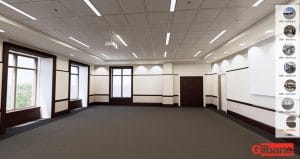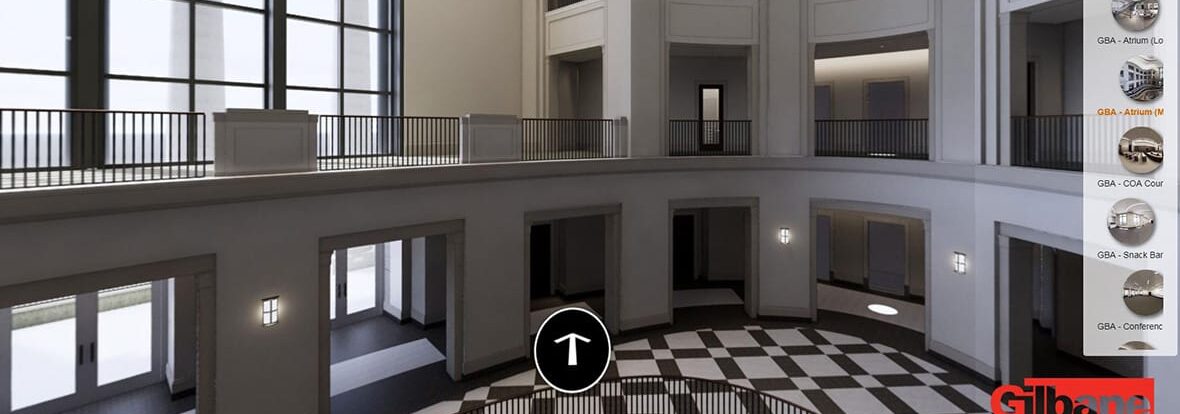Building Information Modeling (BIM) is now considered a go-to practice in the construction industry and is intended to go beyond two dimensions, allowing teams to see a project as a 3-D model representation of a building. However, BIM is often solely viewed on flat screens or on flat paper. Gilbane’s Virtual Design and Construction (VDC) team is pushing the boundaries of the model-viewing experience, transforming the BIM model into a virtual reality (VR) experience. Using virtual headsets and a gaming controller, the viewer can virtually walk through and explore a designed space in 3-D. Through a dedicated room-scale staged play area, users undergo a fully immersive experience. This interactive involvement allows the customer to see and feel how a facility is designed. Any feedback they offer can alter and influence the final design of the space. The VDC process is a powerful tool to communicate the vision of a project and more deeply engage the customer along the way.
Improvements in the Cloud

Additionally, these VDC models can be combined, shared and evolved using specialty software that allows all building team members to contribute to improving a project’s design. Unknown glitches can be exposed and allows the team to make changes prior to breaking ground. Virtual models can be used to estimate, schedule, coordinate and ultimately manage a facility after it is turned over to the client. These models greatly improve our workflow, safety and quality control. Also, within the past two years, virtual reality clouds have drastically cut rendering time. As Gilbane recognizes the sizable time savings, VR is now a standard deliverable to all our clients. Owners can pick up the game controller and immerse themselves into their projects at every stage of design and construction. VR brings BIM full-circle to increase human interactions with the digital. The whole process provides a better, more involved experience for the customer.
Customize the Immersion Approach
Gilbane can customize the approach based on a customer’s desired platform. VR can also be shown on an iPad, web-based, or any number of ways if the client isn’t as familiar with headsets or controllers. Our goal is to provide a user-friendly and intuitive platform to maximize the customer experience.

